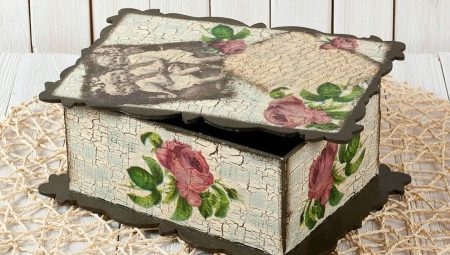To understand how diverse decoupage is, let's talk about decorating objects made from different materials and about surfaces that cannot be called objects - walls, floor, ceiling, windows, doors. Everything that our imagination touches can be suitable for decorating with decoupage technique.
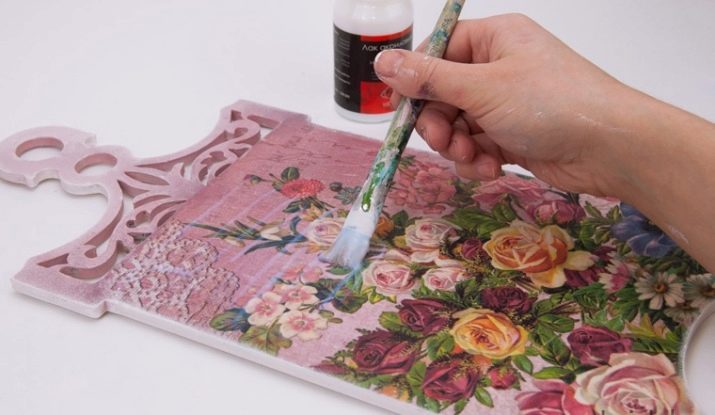
What it is?
Let's try to answer the question. Translated from French, decoupage means "cut." Indeed, the technique of such decoration is the cutting of pictures and pasting them on an object, in other words, applications. An occupation familiar to us since kindergarten. But the result is completely childish. Decoupage technique allows you to achieve a stunning effect. In addition, it has a lot of advantages.
- You can update old furniture, various little things that could only be thrown away. But they got a new life and became a worthy decoration of the interior.
- Decoupage materials are inexpensive.
- Pictures for applications can be borrowed from posters, calendars, colored napkins, newspaper and magazine clippings. Wallpaper patterns and fabric options are suitable.
- Everything you need for decoration can be easily purchased at needlework stores or online stores. There you can also find ready-made pictures on rice paper or on decoupage cards.
- Doing the work yourself, you get a lot of pleasure from the process and the results of labor.

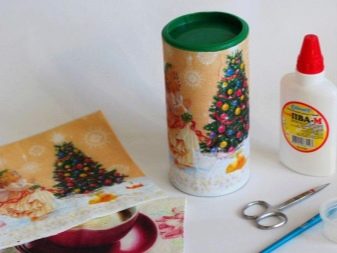
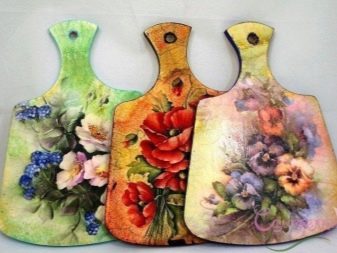
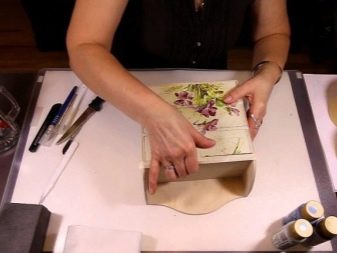
Necessary tools and materials
Before you start decorating with applications, you should thoroughly prepare.Having an item to remake and a picture you like is only part of the story. To connect them, you will need a number of materials and auxiliary tools:
- acrylic or gypsum primer for preparatory work;
- sandpaper for surface grouting;
- acetone, which degreases the material;
- acrylic paint, it forms the background of the decor;
- paint brushes, sponge;
- the picture from which the application is cut out;
- a basin of water in which the image is soaked;
- varnish for finishing work.

If you wish, you can decorate the decoupage with rhinestones, gold thread, paint with paints or artificially age using different techniques.
Basic tricks
Having discovered decoupage, many enthusiastically immerse themselves in work, not even suspecting that there are a lot of basic techniques (types of performance techniques). Possessing this information in advance, you can understand what materials are suitable for certain techniques, how to enhance the effect of decor.
Direct decoupage (classic)
The most popular technique for decorating things with pictures. The pattern cut out of paper, napkins, fabric, tulle is applied with glue to the outside of the item. Then it is fixed with varnish. This method can be used to decorate everything: household products, furniture, walls, floor, ceiling, doors. It is suitable for any material.
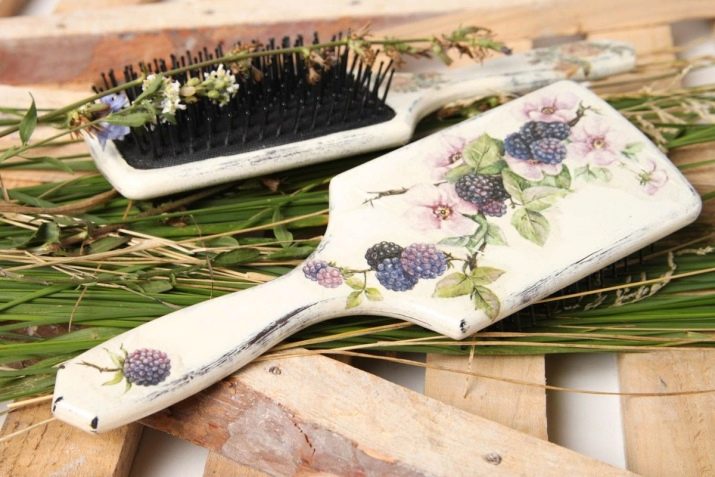
Reverse decoupage
In this case, the drawing is applied to the inside of the item. This method is suitable for transparent structures (glass, plastic). If we take a glass plate as an example, the picture is not glued from the front, but from the back, it will be visible through the glass.
From a plate made by the method of reverse decoupage, you can eat food. The dishes made using the direct decoupage technique perform only decorative functions.
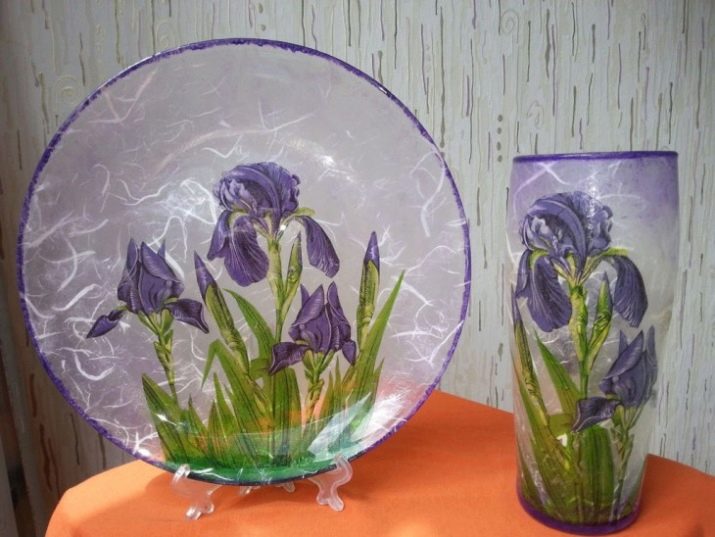
Volumetric decoupage
This technique involves creating a structural surface onto which the picture is then pasted. Decorated with surround decoupage, the item looks realistic. The effect is achieved in many ways. You can purchase 5 or 6 identical images, cut them into parts and just lift the pattern by sticking picture elements onto each other. But one should not be too zealous, an excess volume destroys the perception of reality.
Beginners can use ready-made three-dimensional cards, which are sold for decoupage in needlework stores. You can also get structural pastes with various fillers there - with their help they lift the necessary parts of the surface of the product.
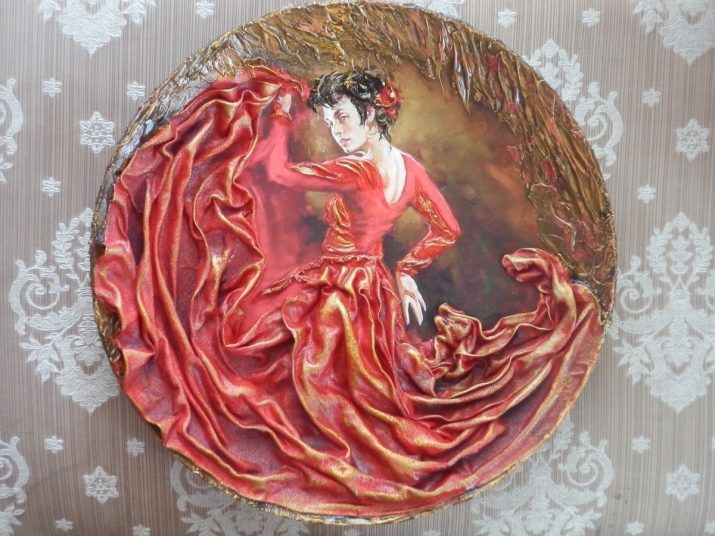
Art decoupage (smoky)
This method allows you to combine a drawing with a background, erasing the boundaries between them and turning the artistic image of the product into a single whole. Outwardly, the image becomes like a real painting by the artist. Before drawing the surface, the surface is primed and painted in a color close to it. Having pasted the picture, with the help of a sponge they retouch, removing the borders, and then paint and complement the picture with a brush and paints.
This is the most difficult type of decoupage, requiring certain abilities from the master. But the result is amazing - the thing looks like a work of art.
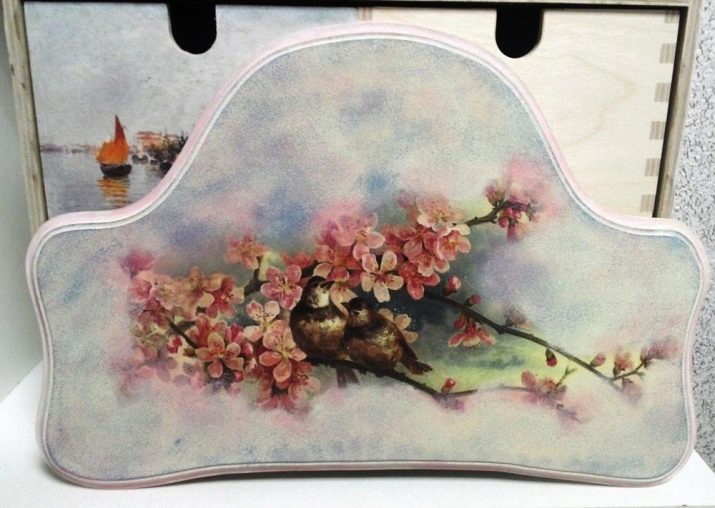
Decopatch
It is considered a kind of decoupage. It reminds creativity of a patchwork (patchwork) when the surface is assembled from many small flaps. In the technique of decopatch, drawings are cut or torn into pieces, the surface is freely pasted over, filling the entire object with them.
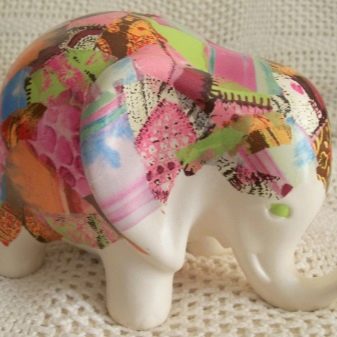
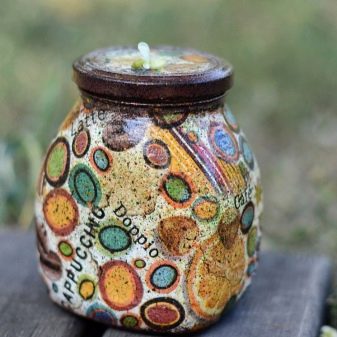
General recommendations for beginners
Decoupage is a simple and inexpensive opportunity to turn an old thing into a new and stylish one. The foundations of the technique are laid down in the exact observance of the steps that must be followed during the work: cleaning the surface, primer, staining, gluing the picture, varnishing. We will consider the decoupage technique in more detail in the chapter “Master classes”. Now let's talk about what secrets have been accumulated by masters over the years of decorating practice.
- The decoupage item in the room must match the interior design. To do this, carefully select the picture and color of the colors of the future decor.
- At the last stage in the process of varnishing, some paints may leak. Therefore, solvent resistant materials must be selected. Pictures with a glossy surface are well suited, inkjet printing will be less successful. To fix the pattern made on the printer, it is coated with hairspray.
- In some cases, toilet paper is used to create volume - it forms folds well.
- To give the image an image of antiquity, it is soaked in a decoction of onion peel or tea. It acquires an aged, yellowed “from time to time” appearance.
- When working with dishes, it is better to use special heat-resistant varnishes, for example, Hobby Line. In such dishes, you can cook in the oven or use it in a microwave.
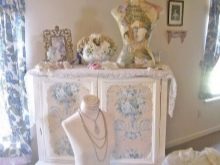
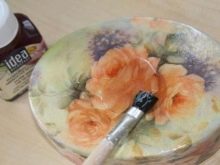
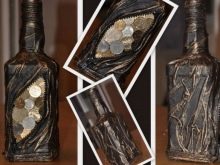
If the picture for decoupage is selected on a fabric basis, you need to select the thinnest material. Too dense structure will look unnatural.
In order to give your work a special, unusual look, there are various additional techniques. Here are the most common ones.
Potal
Potal is the thinnest metal film of a golden or silver hue. It covers the subject as background, like gold leaf, and then apply. Sometimes potal is used to create fragments of decor.

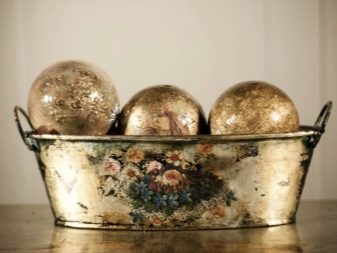
Craquelure
Special varnish, combining with paint, when dried promotes its crackinggiving the subject an old look.
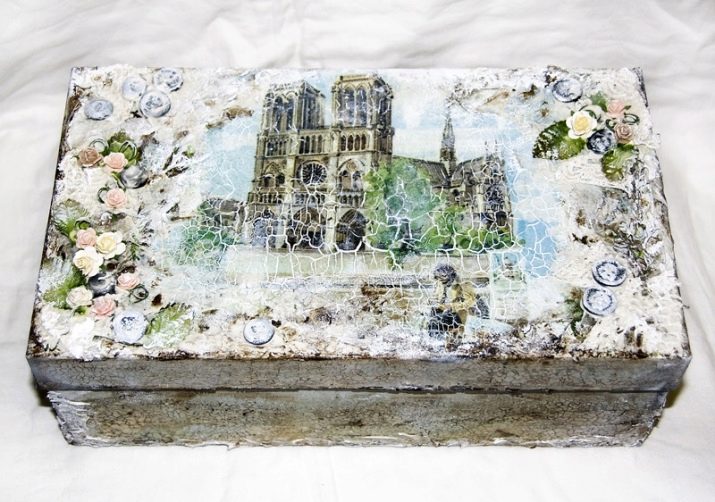
Patina
On products of non-ferrous metal over time, oxidative processes occur, and appears tan plaque. An imitation of this process is called patina. Using a certain technique, realistic coloring of objects of any structure, completely far from metal, is achieved.
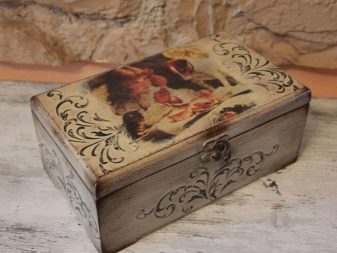

Master classes
When the choice of a decoupage item and a picture has already been made, one proceeds to the execution technique itself. Let us consider step-by-step decoration with applications - the so-called direct decoupage, which any beginner can do with his own hands.
- If furniture is selected, old paint is removed from it and the surface is well cleaned. If you have to work with smooth material, it is treated with an alcohol-containing liquid to degrease it.
- Apply several layers of gypsum or acrylic soil. Each layer is well dried.
- The primed surface should be sanded with fine-grained emery paper, achieving perfect smoothness.
- Next, paint the item with acrylic paint using a wide soft brush. Sometimes, instead of a brush, they use a piece of foam, extinguishing them by applying the first layer of white acrylic paint. Give time to dry. The second layer of staining should be tinted, match the background of the picture. Sometimes, to enhance the concentration of color on the first coating, instead of white, they also use background paint.
- It's time to work on the picture. It can be from anything (magazine clipping, photography, printer printout, napkin). The picture is cut out and soaked for twenty seconds in water, then with a careful movement, remove the excess paper, leaving only the picture. If a napkin is selected for decoupage, it is delaminated, leaving only a colorful layer.
- The drawing is carefully planted on glue and smoothed with a soft brush starting from the center and ending with the edges. If PVA glue is used, it is diluted with water. Thus, small drawings or fragments of them are pasted. The large image is first laid out on a cellophane film, thoroughly smoothed with a wet swab. Then, they are pressed to the adhesive surface and the cellophane is removed. They give the opportunity to dry.
- If you wish, you can refine the drawing, completing and correcting the image with paints.Then, the painted, glued and dried decoupage is coated with acrylic varnish. It is applied in an amount of from two to five layers, each of which is dried before applying another.
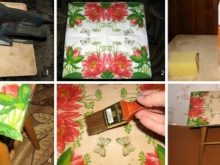
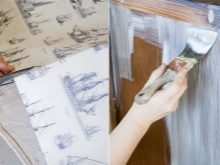
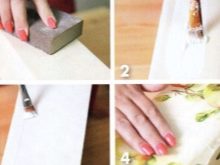
The above decoupage technique is considered to be the main one, in each case there will be personal improvements, for example, aging of the surface, blurring of the background, application of pearl, patination and so on. The technique can be applied to any surface.
We offer another master class on the use of eggshells using decoupage technique. Consider its use in decoration with the example of a wall composition enclosed in a frame. For work you will need a cardboard base, frame, eggshell, paints, glue, a picture and varnish. The workflow involves a series of steps.
- Egg shells are collected and prepared. To do this, it should be washed well, remove the inner film, and dry.
- The finished shell is broken into small particles of approximately the same size.
- Prepare a cardboard base. It should be cut to fit the frame.
- Shells are glued onto cardboard with PVA glue - painstakingly, fragment by fragment. Between each particle there should be a distance of 1-2 mm. The shell is trimmed with a needle. In the end, she should close the entire canvas.
- The eggshell glued to the cardboard will look colorful. Align the background with white acrylic paint. A thick composition is best diluted with water. The applied paint should not seal the gaps between the fragments of the shell, because we achieve a textured surface.
- When the base is dried and completely ready, start working with the picture. Cut out the pattern from a napkin, delaminate it, leaving only a color layer. Then glued to the prepared base.
- Varnish the surface and leave to dry.
- Finished decor is placed in a frame and hung on the wall.
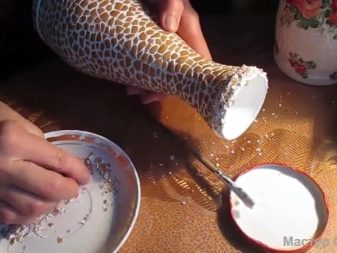
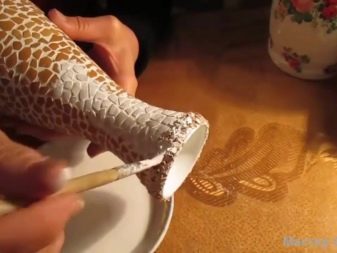
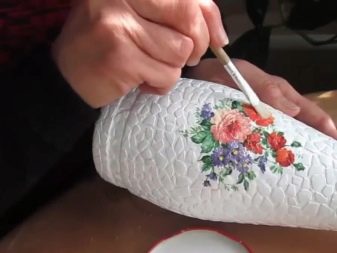
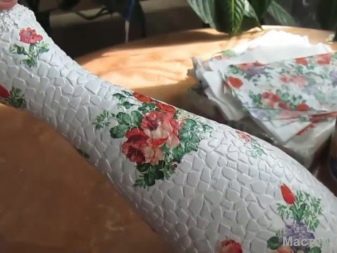
Egg shells can be replaced with small sliced skin fragments. It is also used as a general background, painted and decorated with a picture. Sometimes stones or shells are chosen as the basis for the drawing. They create a beautiful volume.
Decoupage on plastic
Plastic is the brainchild of technological progress; it always looks like an unnatural material. But there is a unique opportunity with your own hands to change the plastic surface beyond recognition. If it is covered with gypsum soil, a picture and varnish, the thing will take on a sculptural appearance, it may look like a ceramic product. Or the surface is pasted over in the style of a decopatch, then the decoupage item changes the cold structure to a warm paper or fabric, it becomes colorful and cheerful. Let us consider in detail how the transformation occurs.
- The surface is washed, wiped dry and degreased with alcohol.
- Apply a primer, and then several layers of tonal paint. After each action, drying follows. Plastic can be painted without a primer. A very simple option is not to paint the surface, leave it as it is. It all depends on the intent of the master.
- The pattern is cut out and layered.
- The wet picture is placed on the subject of decoupage, gently smooth with a brush.
- You can glue on the surface of the image, it is impregnated and well fixed.
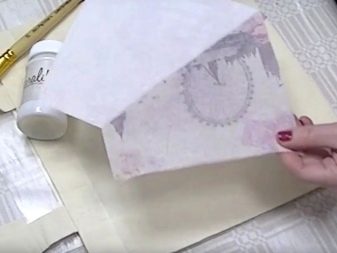
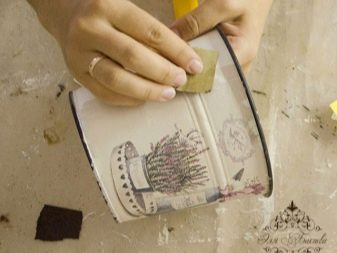
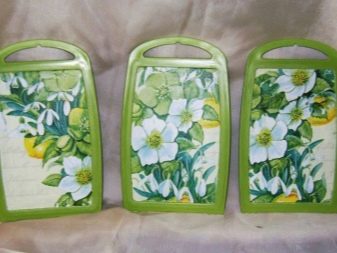
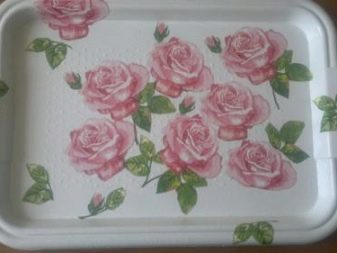
The glue must dry before the product is covered with several layers of acrylic varnish.
Wood work
Decoupage on wood (plywood, board, chipboard) is not much different from working with other types of materials. An exception can only be old painted furniture. Before you decorate it with applications, remove existing paintand then use a coarse sandpaper or grinder to smooth the surface well to a smooth state. Polished furniture is stripped to a shine.
Old, dried out objects may have scratches and cracks, they should be coated with putty, and then the surface should be primed.It is much easier to prepare new things for decoration, for example, simple furniture purchased at IKEA, or a wooden cutting board without a pattern.
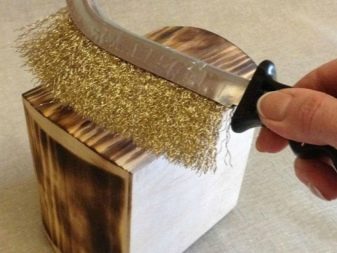
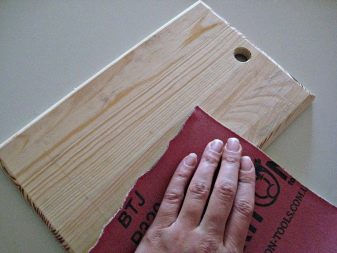
When the primer dries, the wooden surface is covered with paint. It’s not necessary to cut a picture (for example, a flower) from a napkin or rice paper, you can gently tear it off, then the jagged edges fit more naturally and merge with the painted wood surface. Using a sponge, the borders of the picture can be processed, retouched.
Each wet coat (putty, primer, paint) should dry before applying the next composition. The final action in the decoupage technique will be surface varnishing.
If a decorative wooden panel or box was made, fresh, not yet frozen varnish can be applied with beads, small rhinestones, glued thin lace or braid.
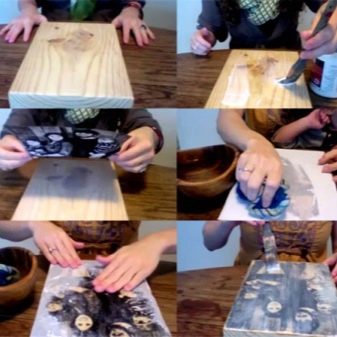
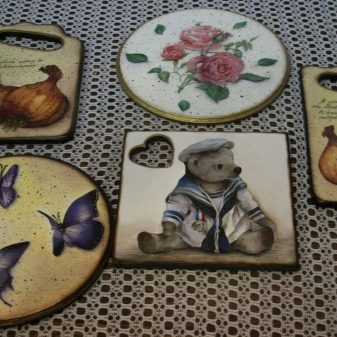
Metal decoration
Any metal product (aluminum, stainless steel, non-ferrous metal) lends itself to decoupage, you just need to prepare it correctly. To do this, we perform several actions.
- If there is rust on the item, it must be removed.
- To sand a product, to achieve full smoothness.
- Then degrease with acetone.
- At the next stage, the surface is primed using a special primer for metal.
- If a samovar, a lamp, a teapot and other heating objects are decorated, it is necessary to use only heat-resistant varnishes and paints in work.
- The drawing can be glued to the varnish, and on top cover with another layer. To work with metal, it is better to use alkyd-urethane varnishes. They do not create smudges, but can give a yellow tint. Vintage styles will benefit from this. If a shade is not needed, cover the product with one coat of varnish.

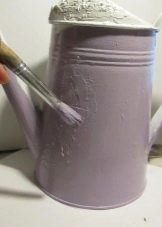

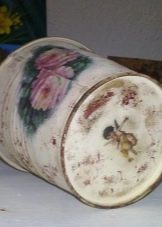
For decorating the metal do not use compositions based on water.
Wall decoration
Decoupage technique can rarely be found on the walls, but nevertheless it is used, and it looks great. It is better to resort to decorating the walls with the help of applications in small rooms. It is not necessary to work on all surfaces. If the room is spacious, you should decorate one wall.
Applying decoupage, you need to consider the general style of the interior. For minimalism, black and white variations are suitable, you can use photos. Delicate pastel colors of the pictures are applicable for the directions of Provence, Shabby chic. You can add vibrant posters to your teenage design. Plots of plants, animals and folk ornaments are chosen for all country trends.
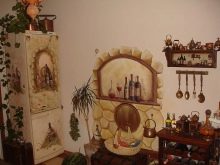
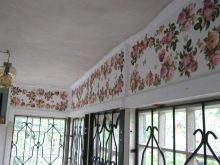
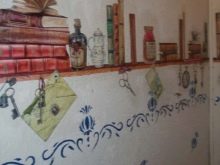
Decoupage technique is started when the surface of the walls is leveled, ideally primed and painted. The color of the picture should be combined with the shade of the surface. Before drawing a picture on a plane, make calculations and markings of places where applications will be determined.
The mark is covered with a small amount of glue, a picture is applied and gently pressed. With a wet brush, smooth the pattern from the center to the edges, removing bubbles and excess glue.
When working with a multifaceted composition, large fragments are first applied, and then small ones. All elements are glued with an overlap. After drying, work several times locally (only in places of applications) varnish.
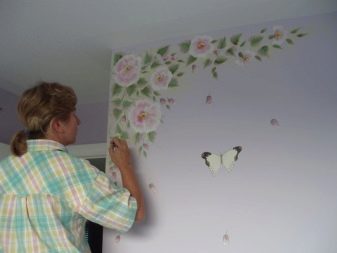
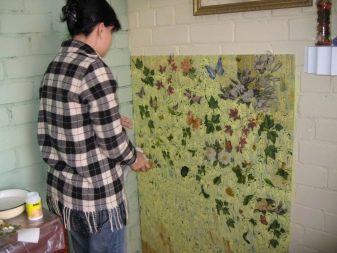
Carton box decoration
A cardboard shoe box prepared for throwing out can become an original decor item and a useful box for small things. To transform it, you need to choose pictures that match the color and style of the interior, prepare a primer, glue, varnish, paints - and get down to business.
Before you start decorating, reinforce the corners of the box with masking tape. The entire product is coated with an even layer of acrylic primer and dried. Then they wipe the surface with fine sandpaper until they are completely leveled. The box is painted in a tone corresponding to the picture. After drying, they cover the places that will be decorated with pictures with glue for decoupage.When the glue dries, an image is applied to it, covered with paper and ironed with a hot iron.
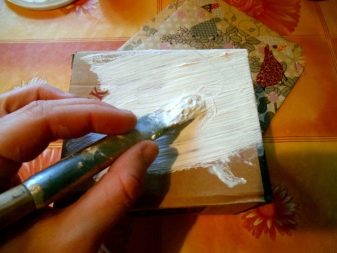
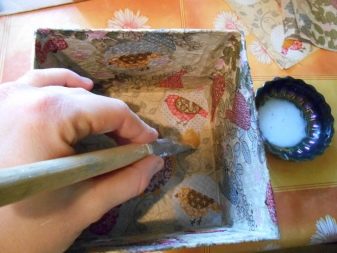
Decoupage technique is suitable for those who want to feel like an artist, but do not have the ability to draw, but is endowed with creative enthusiasm, perseverance and the desire to create beauty.
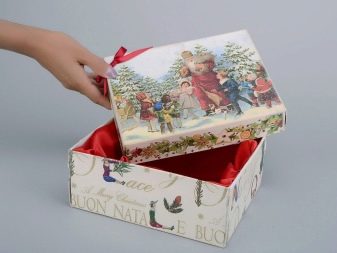
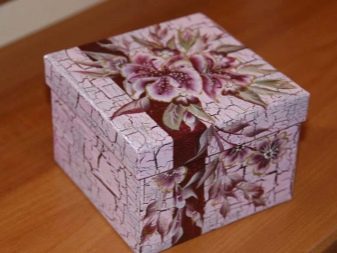
See the following video for a decoupage workshop.
